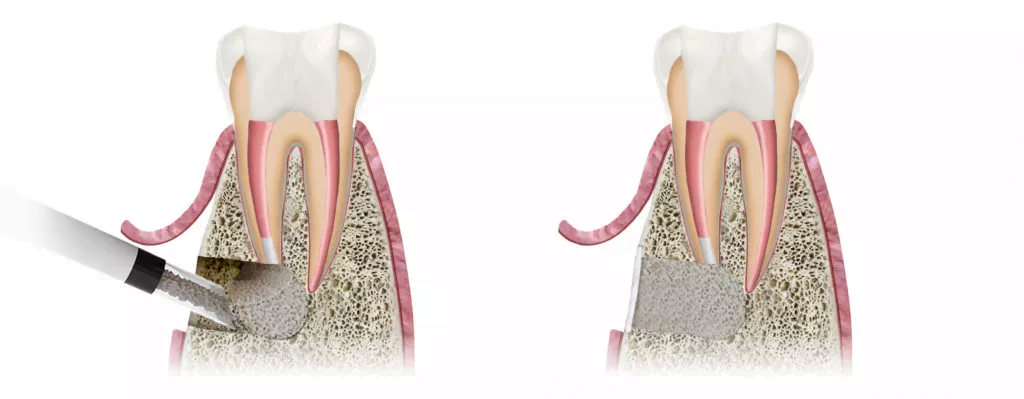Apicoectomy is a surgical procedure removing the tip of a tooth root and surrounding infected tissue when standard root canal treatment is ineffective.

What is an apicoectomy?
The hallmark symptom indicating inflammation in the tissues surrounding the tooth root is typically heightened pain during biting. This persistent pain is often accompanied by cheek swelling, noticeable bulges on the gum, and a subfebrile state. The nature of the pain, whether mild or pulsating, depends on the type of tissue inflammation. Periapical inflammation is the body’s response to the presence of bacteria in the root canal, leading to the formation of inflammatory tissue in the vicinity of the root apex.
Apicoectomy Procedure
When conventional root canal retreatment is not viable or periapical lesions resist such intervention, the sole recourse is apical root resection.
This procedure is performed under local anesthesia. The resection entails the removal of the root fragment containing the uncleaned and unfilled portion of the canal. The surgeon, during the process, exposes the bone by opening soft tissues around the root, extracting infected or inflamed tissue, including the root tip. To seal the end of the duct, a specialized cement (MTA) or amalgam is employed. Post-surgery, significant bone loss often occurs, necessitating supplementation with bone substitute biomaterial and protection with a designated membrane.

1. RISING OF GINGIVAL FLAP, CREATION ACCES TO THE PERIAPICAL AREA 2. REMOVAL OF INFLAMED TISSUE

3. CUTOFF OF ROOT TIP 4. RETROGRADE ROOT CANAL FILLING

5. BIOMATERIAL INTRODUCTION 6. PLACEMENT OF PROTECTIVE MEMBRANE
Following apicoectomy surgery, akin to any surgical intervention, minor pain and swelling may manifest. Typically, these symptoms subside within a few days. However, should you experience prolonged or escalating pain, swelling, bleeding, or fever, it is advisable to promptly reach out to your dentist for guidance.

